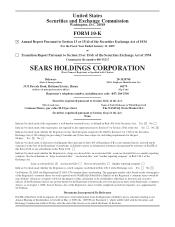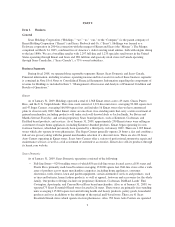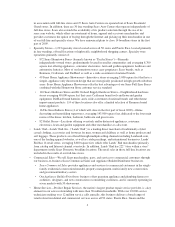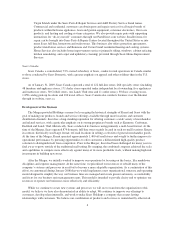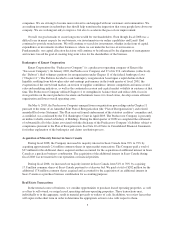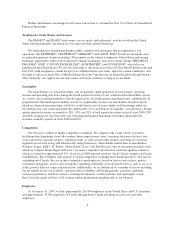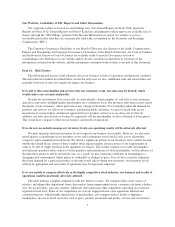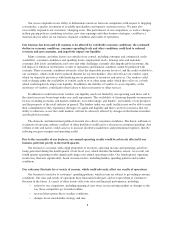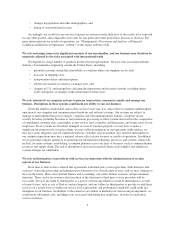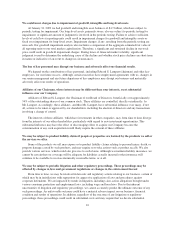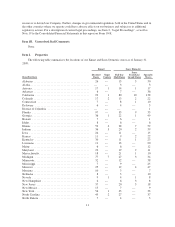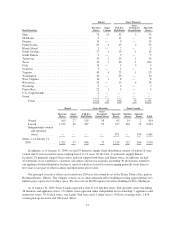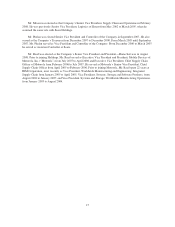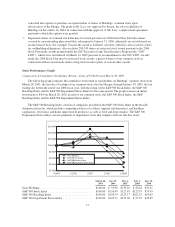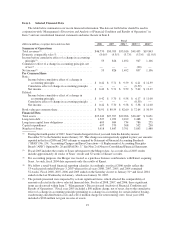Sears 2008 Annual Report Download - page 9
Download and view the complete annual report
Please find page 9 of the 2008 Sears annual report below. You can navigate through the pages in the report by either clicking on the pages listed below, or by using the keyword search tool below to find specific information within the annual report.• changes in population and other demographics, and
• timing of our promotional events.
Accordingly, our results for any one fiscal quarter are not necessarily indicative of the results to be expected
for any other quarter, and comparable store sales for any particular future period may increase or decrease. For
more information on our results of operations, see “Management’s Discussion and Analysis of Financial
Condition and Results of Operations” in Item 7 of this report on Form 10-K.
We rely on foreign sources for significant amounts of our merchandise, and our business may therefore be
negatively affected by the risks associated with international trade.
We depend on a large number of products produced in foreign markets. We face risks associated with the
delivery of merchandise originating outside the United States, including:
• potential economic and political instability in countries where our suppliers are located,
• increases in shipping costs,
• transportation delays and interruptions,
• adverse fluctuations in currency exchange rates, and
• changes in U.S. and foreign laws affecting the importation and taxation of goods, including duties,
tariffs and quotas, or changes in the enforcement of those laws.
We rely extensively on computer systems to process transactions, summarize results and manage our
business. Disruptions in these systems could harm our ability to run our business.
Given the number of individual transactions we have each year, it is critical that we maintain uninterrupted
operation of our computer and communications hardware and software systems. Our systems are subject to
damage or interruption from power outages, computer and telecommunications failures, computer viruses,
security breaches, including breaches of our transaction processing or other systems that result in the compromise
of confidential customer data, catastrophic events such as fires, tornadoes and hurricanes, and usage errors by our
employees. If our systems are breached, damaged or cease to function properly, we may have to make a
significant investment to fix or replace them, we may suffer interruptions in our operations in the interim, we
may face costly litigation, and our reputation with our customers may be harmed. Any material interruption in
our computer operations may have a material adverse effect on our business or results of operations. In addition,
we are pursuing complex initiatives to transform our information technology processes and systems, which will
include, for many systems, establishing a common platform across our lines of business, such as common human
resources and supply chain. The risk of disruption is increased in periods where such complex and significant
systems changes are undertaken.
We rely on third parties to provide us with services in connection with the administration of certain
aspects of our business.
From time to time we have entered into agreements with third-party service providers (both domestic and
overseas) to provide processing and administrative functions over a broad range of areas, and we may continue to
do so in the future. These areas include finance and accounting, call center, human resources and procurement
functions. There can be no assurance that transition of the functions to third party service providers will be
successful. Services provided by third parties as a part of outsourcing initiatives could be interrupted as a result
of many factors, such as acts of God or contract disputes, and any failure by third-parties to provide us with these
services on a timely basis or within our service level expectations and performance standards could result in a
disruption of our business. In addition, to the extent we are unable to maintain our outsourcing arrangements, we
would incur substantial costs, including costs associated with hiring new employees, in order to return these
services in-house.
9

